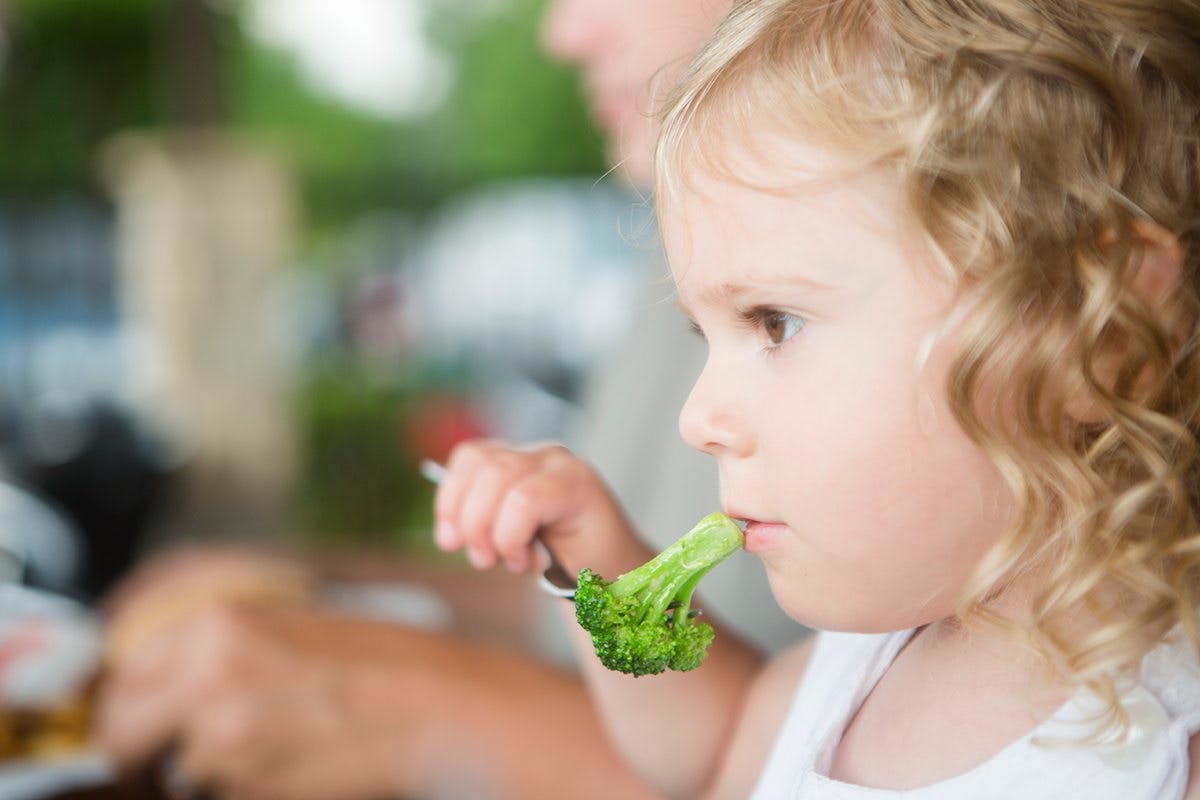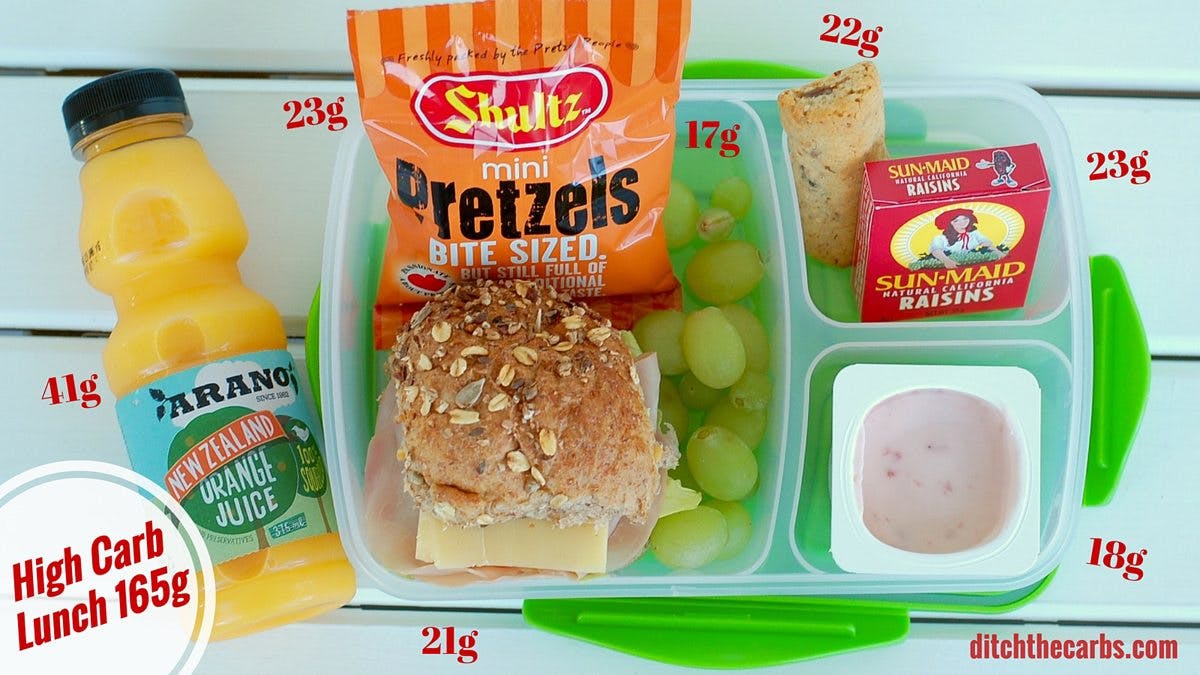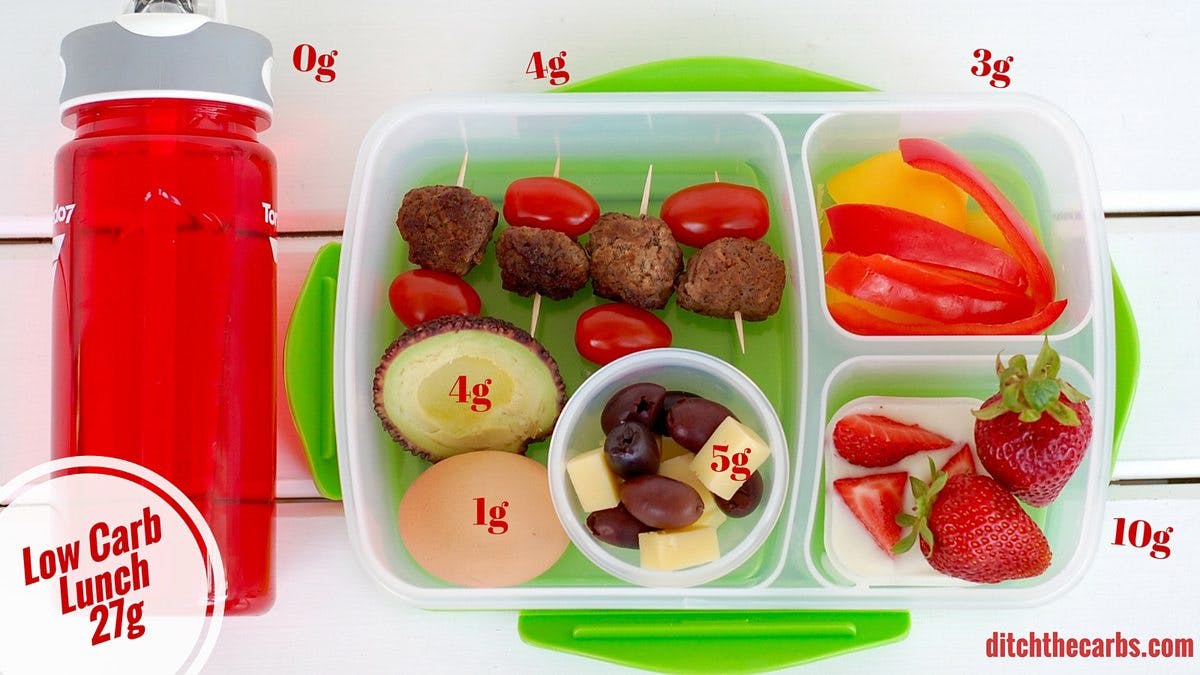Low-carb kids – how to raise children on real low-carb food

This is a guest post from Libby Jenkinson, a registered pharmacist, mother of 3 children, and the founder of ditchthecarbs.com, the leading low carb website in New Zealand and Australia.
Low-carb kids
We cannot overemphasize the importance of whole food nutrition in children’s health. All children will likely benefit from lowering their sugar and carbohydrate intake, especially from processed and junk foods.
We emphasize feeding Low Carb Kids tasty nutrient dense meals rather than relying on sugars, grains and high carb snacks. Low carb is all about going back to basics – meat, vegetables, low sugar fruit, seeds, nuts and healthy fats. Real food is simple food.
Many critics confuse low carb with no carb. We do not advocate a complete absence of carbs. Instead, we emphasize better carb choices rich with vitamins, minerals, fiber and antioxidants such as vegetables, nuts, dairy, and berries.
Children need to receive all the nutrients required for their growing bodies but can easily do without the sugars and carbs of the modern diet. By removing processed junk food from their diet, children become low carb almost by default.
High carb (left) vs. low carb (right)


Reducing processed and high carb foods from children’s meals can potentially reduce their risk of obesity, type 2 diabetes, tooth decay and other diseases of metabolic dysfunction. It will likely improve their overall nutrition, and possibly even their concentration, mood, and energy. Perhaps most important for their future, it may also develop their appreciation for real food over processed foods.
We should teach children the joy of cooking low carb food for exceptional nutrition and health. The food we feed our children impacts their growing bodies as well as their future health. Chronic diseases don’t happen overnight. They happen over years and decades, possibly spurred on by exposure to high sugars, high carbs, and highly processed foods.
Why lower the carbs? When children eat low carb nutritious meals they avoid the high/low blood sugar roller coaster, they avoid energy slumps and more importantly, they avoid most of the inflammatory elements of our modern diet. Many parents are unaware of how much sugar is hidden in everyday foods. 77% of processed food has added sugar. Take a look at the 2 lunchboxes and compare their carb values.
The rapidly absorbed carbs, which spike blood glucose, also crowd out nutrition. For example, the nutritious element in a chicken salad sandwich is the filling, the bread is just a bulking agent that adds very little nutrition to the meal. The hope is that by removing bread/pasta/rice from a meal, your children will fill up on fresh vegetables, good quality protein and healthy fats instead.
What about fat? – Nutritional fats are essential for hormone production, healthy brain function, tissue development, appetite control and absorption of fat-soluble vitamins (A, D, E and K). Children especially need omega-3 fatty acids for healthy eye and brain development. We recommend avoiding many low fat products as they generally have added sugar to improve the flavor and texture. Instead, we suggest consuming natural fats such as olive oil, butter, coconut oil, oily fish, nuts, seeds, eggs and meat.
Fruit and vegetables? These should be the biggest source of carbs for children. They are also a valuable source of fiber, vitamins, minerals, antioxidants and phytochemicals. However, fruit and vegetables should not be seen as equal. Fruit is higher in sugar, much of which is fructose. Therefore we recommend low sugar fruits such as berries and even then limit them to once or twice a day. Cut back on the higher sugar tropical fruit such as melons and pineapple and avoid dried fruit completely. And what about the “natural” fruit juices? They can contain as much sugar as some sodas. A glass of juice is equivalent to the sugar in 6 oranges. Would you ever sit down and eat 6 oranges at a time? It’s unlikely. Eating whole fruit is self-limiting due to the fibre, drinking juice is not. Many “fruit juices” are actually sugared water with fruit flavours.
Why grain free? The modern day message of healthy whole grains is more complicated than it appears. If someone chooses to eat grains, then whole grains are a much better choice than refined grains. There is little debate there. However, could eating little to no grains also be a healthy approach? There aren’t any studies we are aware of addressing this question. However, we do know that humans can easily achieve adequate nutrition with an omnivorous grain-free diet. Plus, if calories are coming from grains, what are they not coming from? Frequently it comes at the expense of vegetable or necessary fats and proteins.
And don’t worry about fiber. If your kids are eating a wide array of vegetables, they are getting al the fiber they need.
Instead, let’s crowd out the junk. Encourage your children to eat more vegetables, meat, nuts, seeds, and healthy fats. Encourage and teach your children to cook. Encourage them to choose new things from the vegetable aisle. Praise them each time they try something new. Help them develop a taste for real food and enjoyment of cooking. Cook and prepare food together. Have fun.
With encouragement and guidance you too can help your children eat real food.
Top Tips
- One meal at a time – if you have a fussy eater, your household will not be a happy one if you go straight in and change everything overnight. Change or remove only one element at a time. Remove (or reduce) the most obvious place sugar lurks such as sweets, cakes and ice cream, then cut back on bread, pasta and other high carb foods. Be proud of any changes you make, and strive for improvement not perfection.
- Be organized – plan your meals and have plenty of fresh food at hand. Have some boiled eggs in the fridge, leftovers in the freezer, fresh vegetable pre cut in containers, tins of tuna in the pantry. Prepare extra vegetables each night, ready for the next day’s snacks or lunch box.
- Make double dinners – leftovers are king and are such an easy way to prepare for school lunches. Cooked sausages, roast meat, quiche, meatballs or eggs any way are always popular options. Fill your freezer with leftovers. Learn to love your freezer!
- Reduce the bread – try bread free lunches once or twice a week, increasing until you are bread free. Try thin wraps or open sandwiches to cut back for really reluctant children.
- Involve your children – give them a limited choice of healthy foods to choose from so they feel they have some control.
- Choices – allow them to leave one vegetable on their plate. This is the trick that really turned my 8 year old around. He felt he had the final control of his dinner, unbeknownst to him I give him more of everything to begin with.
- Plan meals – allow them go through LCHF recipe websites and cookbooks to choose meals and recipes. Let them collate their own special cookbook.
- Picky eaters – all children love picking at food and eating small platters. I often put out a selection of vegetables, cold meats and cheeses for their afternoon tea. Buy a lunchbox with small compartments and serve them a buffet.
- Healthy fats – at meal times encourage your children to eat their vegetables by putting healthy fats on the dinner table such as butter, grated/shredded cheese, salad dressings and minimally processed oils. Not only will the flavor be enhanced, it helps them absorb the fat-soluble vitamins from their meal. Pack dips, salsa and sauces to dip their vegetables in at school.
- Drinks – start serving water only. Stop allowing them to drink juice or soda. These can be the biggest contributor of sugar in their meal.
- Beware – read the labels of foods traditionally given to children such as raisins, muesli bars, fruit yoghurt and cereals. These are often the worst culprits. Find or make your own low sugar alternatives. You will know exactly what goes in them.
- Feed them a rainbow – a colourful meal is so more attractive packed with a variety of colour and nutrients.
- Stop buying kids meals – most kid’s meals are highly processed foods packed with processed seed oils, grains and carbs. Start ordering half an adult meal, or split an adult meal between siblings.
- Try and try again – moving children onto real food can really be a challenge. It won’t happen overnight but it will happen. Continue to introduce new foods and remove others.
Don’t be daunted at the start. You can do this. It’s getting back to basics and ditching the processed junk. Have fun preparing meals together and discovering new recipes. So many families have commented that they are cooking for the first time, learning to appreciate real food and excited at the prospect of a healthier lifestyle.
Don’t think you are depriving your child of junk food, you are teaching them how to eat healthy and remain healthy. You are feeding them the healthy fats and good sources of protein their bodies truly need.
Top real food and lunchbox ideas
- Roll ups – use slices of cold meat, nori sheets or lettuce as a wrap and fill with cheese, salad or dips
- Vegetables – cut in different shapes with a variety of dips
- Low carb baking – make your old favorites but using sugar and grain free recipes
- Nut butters
- Smoothies – with plenty of healthy fats and flavours, it’s amazing what you can hide in a smoothie
- Tins of tuna
- Boiled eggs
- Mini quiches – add their favourite vegetables and meats
- A variety of nuts
- Cheese sticks/cubes/slices
- Billtong/beef jerky
- Avocados
We are all busy parents and we do the best we can with what we have. Don’t think this is an impossible task. We are simply feeding our children real nutritious foods. Meals don’t have to be complicated, fussy or difficult, to the contrary, they are generally simple, colourful and fresh.
Action plan
- Stop buying sugary sweets, drinks and baked goods
- Start buying real unprocessed whole foods. Shop the perimeter of the supermarket for the fresh produce
- Avoid all trans fats and try to minimize highly processed oils
- Eat nutrient dense foods
- Increase your omega 3 from oily fish, avocado, grass fed meat and nuts
- Cook at home, eat together
Remember – we are LOW carb, not NO carb. The emphasis is on the real whole food approach, healthy fats, fresh vegetables and good quality proteins.
Part 2
How to help transition your children to low-carb real food
More From Libby
One month of my children’s lunch boxes
The ultimate guide to low-carb lunches
Healthy sugar-free after school snacks
About
Libby Jenkinson is a registered pharmacist, mother of 3 children, and the founder of ditchthecarbs.com, the leading low carb website in New Zealand and Australia.
Libby truly feels she has helped more people regain their health in the last 2 years of ditchthecarbs.com than the last 25 years dispensing medicines. Follow her on Facebook, Twitter, Instagram and Pinterest.
Follow what’s new at DitchtheCarbs and other great low-carb blogs via our Blog news page.
More about food for kids
Another paleo baby: sick only once in her life – but dietitian freaks out
